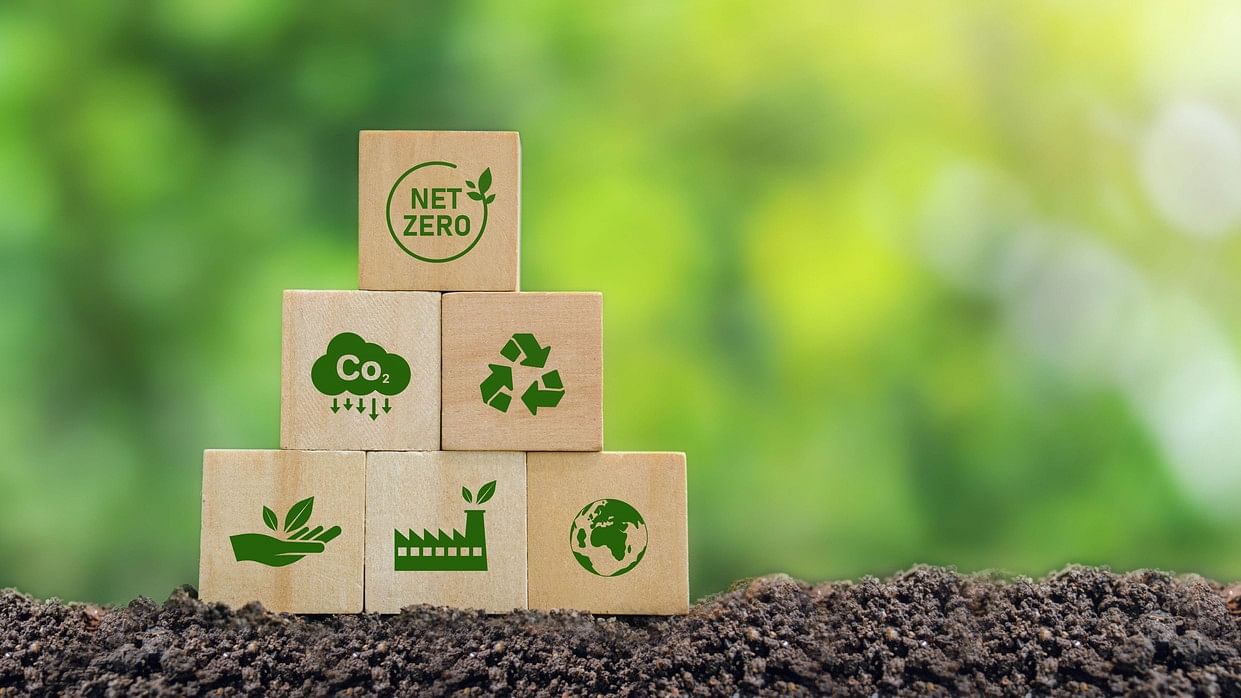
Within the agricultural sector, emissions are dominated by cattle farming (63 per cent) and rice paddy cultivation (11 per cent).
Credit: iStock
Methane is a dangerous heat-trapping gas responsible for 47 per cent of India’s greenhouse gas (GHG) emissions. The agricultural sector dominates India’s harmful emissions to the tune of 37 per cent and methane does 81 per cent of the damage within the sector. Therefore, any initiative to achieve net zero will fail without significant abatement of methane production in agriculture.
The beauty of the challenge is that for each ton of methane avoided, we are avoiding an equivalent of 81.2 tons of carbon dioxide since methane has 81.2 times as much heat-trapping capacity measured over a 20-year period. We can make climate progress 81.2 times as effectively as abating the same amount of carbon dioxide. Thus, reduction of agricultural methane emissions can have a multiplier effect early in India’s journey to net-zero.
The sprawling agricultural sector is the country’s biggest employer and consists of a very large number of small and economically strapped farms. Reducing methane in such a context is an uphill challenge. Within the agricultural sector, emissions are dominated by cattle farming (63 per cent) and rice paddy cultivation (11 per cent). While India has the most cattle of any nation on earth as well as the highest acreage of rice fields, the productivity of both is sub-par. Best-in-class techniques would increase milk productivity by a whopping five times and rice productivity would double. Even beyond milk-per-cow or rice-per-hectare metrics, Indian farming over-uses resources like water, seeds and fertilizers.
The need of the hour is to fashion a win-win-win in agriculture. In such a program, the economy will benefit by uplifting the farming sector, which can best be achieved by raising productivity to best-of-breed levels (no pun intended). Second, resources like water, soil, seeds and fertilizer will be better conserved. And third, the new techniques will dramatically reduce GHGs.
Well-understood methods already exist to reduce GHGs in agriculture. Many new techniques like regenerative agriculture and precision agriculture are popping up. In the case of rice paddy fields, the same methods that improve productivity also reduce GHGs. These techniques include soil composition management, shallow tillage practices to preserve glomalin pathways, precision fertilizer application, agri-genetics, direct-seeded rice and the so-called Modified Pattern of System of Rice Intensification (MPSRI). Studies from Japan indicate that such programs are worthy of emulation.
The growth of digital techniques in precision farming has shown impressive benefits – every resource like water, seeds, fertilizer and pesticides is carefully controlled in concert with remote sensing, weather forecasting and smart agriculture algorithms. Farm equipment can also be fitted with sensors, for example, to automatically measure soil moisture in order to optimize irrigation in concert with weather forecasts. Automation, especially with drones, typically tread lighter on the soil.
When it comes to cattle, a huge productivity boost is achievable while reducing GHGs. Farmers can benefit from up to five times milk productivity enhancement by methods such as selective breeding, and better veterinary care, while being careful not to fall into the trap of over-use of antibiotics and hormones. Enteric fermentation, part of the digestive process of cows, releases methane which can be reduced by balanced rationing of protein, roughage and grains in cattle feed, which also enhances milk productivity. GHGs can be further reduced by proper livestock manure management. Part of the management could be the capture of biogas which in turn could offset the energy needs of the farm.
Speaking of energy needs, we should encourage “agrivoltaics” whereby wind or solar farms are co-located on agricultural fields. This provides farmers with additional income, locally generated energy for the farm’s needs, and additional clean energy to feed into the grid. In addition, use of green hydrogen for fertilizer production will make a dent in fossil fuel use.
India has a unique GHG profile and a unique agricultural sector. This presents both unique problems and opportunities for an India-specific mitigation plan. We need our agricultural experts to fashion a second green revolution by implementing such a win-win-win plan as the highest priority towards accelerating net zero. As side benefits, we will better preserve precious resources like freshwater, and boost the economy. After agriculture, the next biggest GHG culprit is the electricity sector, which is the topic of the next article in the series.
(Visweswariah is VP, cure100.org, and Muralidharan is an R&D specialist, IIT Madras)
(This is the fourth in a series of seven articles on the topic of climate change and net-zero)